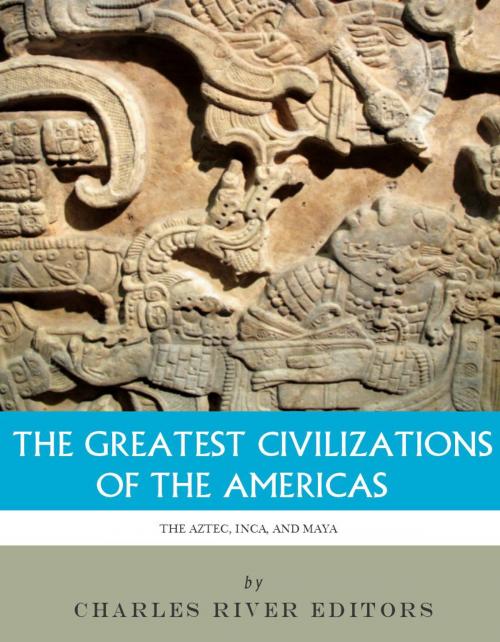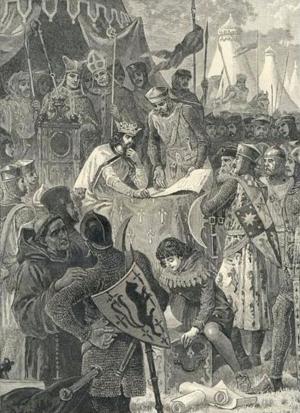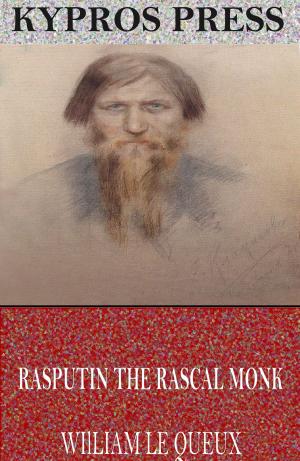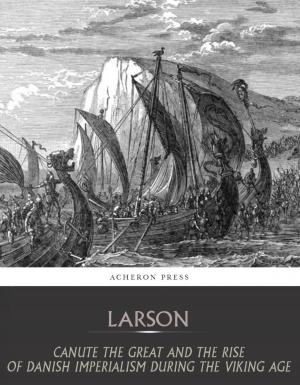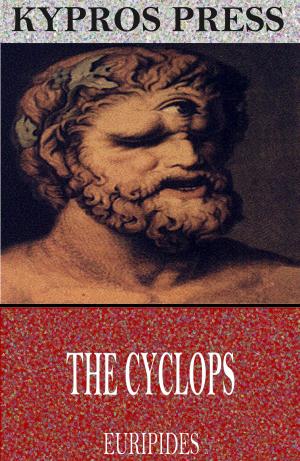The Greatest Civilizations of the Americas: The History and Culture of the Maya, Aztec, and Inca
Nonfiction, History, Americas, North America, Civilization, Native American| Author: | Charles River Editors | ISBN: | 9781475317350 |
| Publisher: | Charles River Editors | Publication: | September 16, 2012 |
| Imprint: | Language: | English |
| Author: | Charles River Editors |
| ISBN: | 9781475317350 |
| Publisher: | Charles River Editors |
| Publication: | September 16, 2012 |
| Imprint: | |
| Language: | English |
*Includes over 50 pictures of the civilizations' art, ruins, architecture, and more. *Describes everyday life for the Maya, Inca and Aztecs, from language to diet. *Comprehensively covers the civilizations' most famous characteristics, including Mayan astronomy, the Aztecs' infamous human sacrifice rituals, and the Inca's Macchu Picchu.*Includes a Table of Contents When the Spanish arrived in the New World, men like Columbus, Cortes, and Pizarro came into contact with a vast array of different Native American settlements. Though the Spanish mercilessly conquered their way through the Americas and aimed to convert the peoples they considered savages, the unique culture, architecture and aspects of the indigenous tribes fascinated even the conquistadors, who brought the accounts back to Europe and fascinated millions across the Atlantic.500 years later, the world is more fascinated than ever by the American civilizations, particularly the Aztecs, Maya and Inca. Of all the worlds civilizations, none have intrigued people more than the Mayans, whose culture, astronomy, language, and mysterious disappearance all continue to captivate people. In 2012 especially, there has been a renewed focus on the Mayans, whose advanced calendar has led many to speculate the world will end on the same date the Mayan calendar ends. The focus on the doomsday scenario, however, has overshadowed the Mayans true contribution to astronomy, language, sports, and art. From the moment Spanish conquistador Hernan Cortes first found and confronted them, the Aztecs have fascinated the world, and they continue to hold a unique place both culturally and in pop culture. Nearly 500 years after the Spanish conquered their mighty empire, the Aztecs are often remembered today for their major capital, Tenochtitlan, as well as being fierce conquerors of the Valley of Mexico who often engaged in human sacrifice rituals. Ironically, and unlike the Mayans, the Aztecs are not widely viewed or remembered with nuance, in part because their own leader burned extant Aztec writings and rewrote a mythologized history explaining his empires dominance less than a century before the Spanish arrived. Naturally, Cortes and other Spaniards depicted the Aztecs as savages greatly in need of conversion to Catholicism. While the Mayans are remembered for their astronomy, numeral system, and calendar, the Aztecs have primarily been remembered in a far narrower way, despite continuing to be a source of pride to Mexicans through the centuries.The Inca Empire, which flourished in modern day Peru and along the west coast of South America, was the largest Native American empire in pre-Columbian America until Pizarro and the Spanish conquistadors conquered them in the 16th century. Though the Spanish physically conquered them in quick fashion, the culture and legacy of the Inca Empire has continued to endure throughout the centuries in both Europe and South America, due in no small part to the fact they were one of the most advanced and sophisticated cultures on the continent. Like the Aztecs, the Spanish burned much of the Incas extant writings, but it is estimated that as many as 35 million once fell under their banner, and the empires administrative skills were so sharp that they kept accurate census records. The Greatest Civilizations of the Americas presents a comprehensive and entertaining overview of the cultures and empires of these 3 amazing civilizations, from describing their technology to explaining what everyday life was like in their capital cities. Along with dozens of pictures of important people, places, events, art, and ruins, you will learn about the Maya, Aztec, and Inca like you never have before.
*Includes over 50 pictures of the civilizations' art, ruins, architecture, and more. *Describes everyday life for the Maya, Inca and Aztecs, from language to diet. *Comprehensively covers the civilizations' most famous characteristics, including Mayan astronomy, the Aztecs' infamous human sacrifice rituals, and the Inca's Macchu Picchu.*Includes a Table of Contents When the Spanish arrived in the New World, men like Columbus, Cortes, and Pizarro came into contact with a vast array of different Native American settlements. Though the Spanish mercilessly conquered their way through the Americas and aimed to convert the peoples they considered savages, the unique culture, architecture and aspects of the indigenous tribes fascinated even the conquistadors, who brought the accounts back to Europe and fascinated millions across the Atlantic.500 years later, the world is more fascinated than ever by the American civilizations, particularly the Aztecs, Maya and Inca. Of all the worlds civilizations, none have intrigued people more than the Mayans, whose culture, astronomy, language, and mysterious disappearance all continue to captivate people. In 2012 especially, there has been a renewed focus on the Mayans, whose advanced calendar has led many to speculate the world will end on the same date the Mayan calendar ends. The focus on the doomsday scenario, however, has overshadowed the Mayans true contribution to astronomy, language, sports, and art. From the moment Spanish conquistador Hernan Cortes first found and confronted them, the Aztecs have fascinated the world, and they continue to hold a unique place both culturally and in pop culture. Nearly 500 years after the Spanish conquered their mighty empire, the Aztecs are often remembered today for their major capital, Tenochtitlan, as well as being fierce conquerors of the Valley of Mexico who often engaged in human sacrifice rituals. Ironically, and unlike the Mayans, the Aztecs are not widely viewed or remembered with nuance, in part because their own leader burned extant Aztec writings and rewrote a mythologized history explaining his empires dominance less than a century before the Spanish arrived. Naturally, Cortes and other Spaniards depicted the Aztecs as savages greatly in need of conversion to Catholicism. While the Mayans are remembered for their astronomy, numeral system, and calendar, the Aztecs have primarily been remembered in a far narrower way, despite continuing to be a source of pride to Mexicans through the centuries.The Inca Empire, which flourished in modern day Peru and along the west coast of South America, was the largest Native American empire in pre-Columbian America until Pizarro and the Spanish conquistadors conquered them in the 16th century. Though the Spanish physically conquered them in quick fashion, the culture and legacy of the Inca Empire has continued to endure throughout the centuries in both Europe and South America, due in no small part to the fact they were one of the most advanced and sophisticated cultures on the continent. Like the Aztecs, the Spanish burned much of the Incas extant writings, but it is estimated that as many as 35 million once fell under their banner, and the empires administrative skills were so sharp that they kept accurate census records. The Greatest Civilizations of the Americas presents a comprehensive and entertaining overview of the cultures and empires of these 3 amazing civilizations, from describing their technology to explaining what everyday life was like in their capital cities. Along with dozens of pictures of important people, places, events, art, and ruins, you will learn about the Maya, Aztec, and Inca like you never have before.
